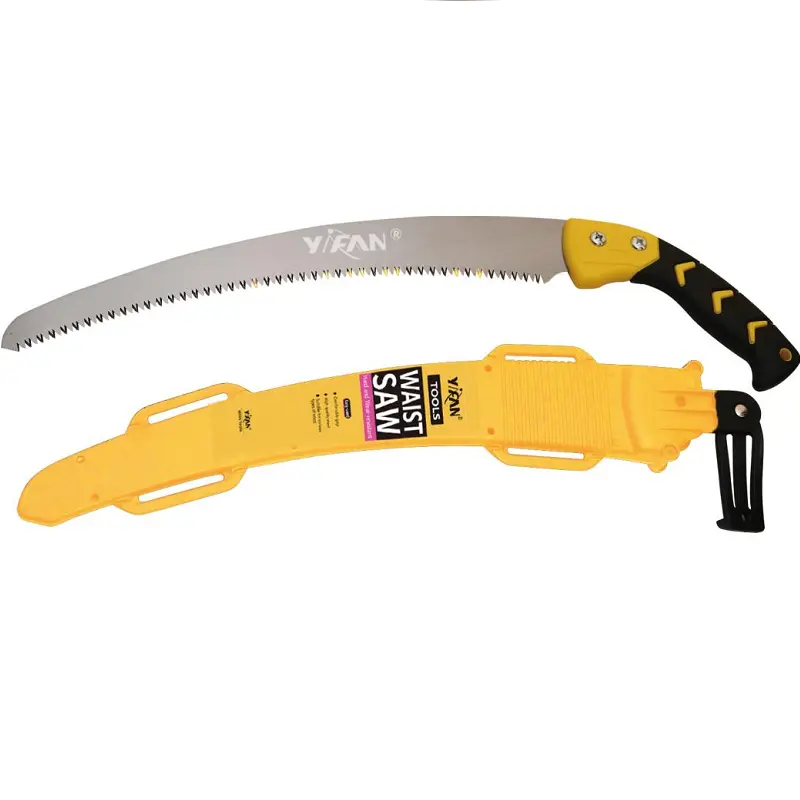Definition and Uses
The waist saw is a common hand tool primarily used for cutting wood, branches, and other materials. It is widely utilized in gardening, woodworking, and various other fields.
Materials and Structure
• Saw Blade: Typically made of high-carbon steel or alloy steel, the blade is sturdy and durable, featuring three-sided mechanically ground teeth that effectively reduce labor intensity.
• Surface Treatment: The blade surface is hard chrome-plated to prevent rust, ensuring high hardness and wear resistance for long-lasting sharpness.
• Handle Design: Ergonomically designed for comfortable grip, reducing hand fatigue during use.
Portability
Waist saws are generally small and lightweight, making them easy to carry for outdoor activities or to different workplaces. They are suitable for various scenarios, including garden pruning, fruit tree trimming, and woodworking processes.
Customization Options
Some waist saws can be customized based on customer needs, such as selecting different blade lengths and tooth counts.

Usage Considerations
1.Choosing the Right Waist Saw: Select an appropriate waist saw based on actual needs and personal preferences.
2.Safety Practices: Pay attention to safety when using the saw, wear appropriate protective gear, and follow correct operating procedures.
Structural Composition
A waist saw typically consists of a saw blade, a handle, and saw teeth. The teeth are the key component, with their shape and arrangement determining the cutting effectiveness.
Cutting Process
• Cutting Method: When using a waist saw, the blade moves across the surface of the material manually or mechanically, with the teeth making contact and applying pressure.
• Cutting Principle: The sharp edges and specific angles of the teeth allow them to penetrate the material and split it apart.
• Friction and Heat: During the cutting process, the action of the teeth generates friction and heat, which can lead to wear on the teeth and heating of the material. Therefore, it’s essential to choose the right type of teeth and materials, and maintain appropriate cutting speed and pressure to ensure effective cutting and prolong the tool's lifespan.
This output summarizes the key points of the original article, covering the waist saw's features, usage considerations, and cutting principles.
Post time: 08-22-2024




